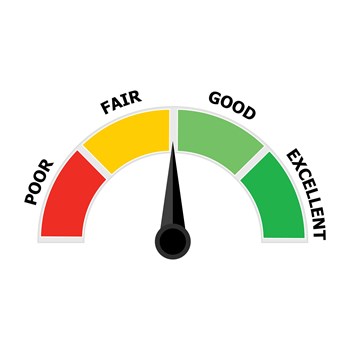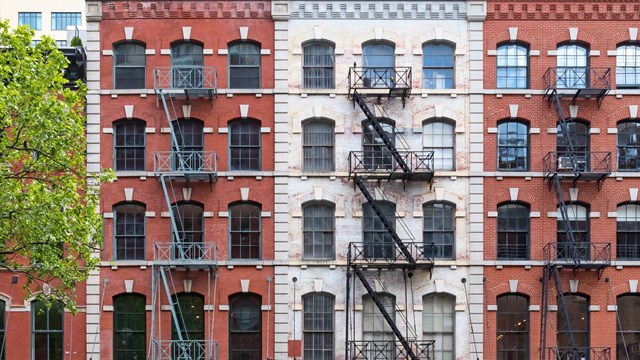
In early 2020, our firm was hired to prepare a reserve study for an unremarkable 136-unit, 12-story condominium in south Florida. It was the kind of association you could drive right by without noticing, not much different from all the other high-rise buildings in this coastal neighborhood.
During the site inspection, we discovered some noticeably severe deterioration in the 39-year-old building—and were therefore not surprised when the board sheepishly admitted that this was their first reserve study. Worse still, the deterioration we observed was compounded by a substantially underfunded reserve account—so our reserve study delivered some bad news to the board and manager. We identified many common area elements with a remaining useful life of ‘0’ years, and developed a funding plan that included a multimillion-dollar special assessment. We had no reason to think about this property again until June 24, 2021, when its tragic collapse resulted in the deaths of 98 people, and Champlain Towers South in Surfside, Florida, became nationwide news as one of the deadliest building disasters in U.S. history.
Expectations vs. Data
The reserve study we delivered to the Champlain Towers South Condominium Association a year before it collapsed was prepared in accordance with National Reserve Study Standards long established by the Community Associations Institute (CAI). In addition to our observations, our assessment incorporated the results of a 2018 structural inspection prepared by Morabito Consultants, so the results of our study were not a surprise to the Champlain board. And although the current board was courageous in finally beginning to address the reality of the building’s deteriorated condition, time was clearly not on their side.
The cracks that we saw during our 2020 site inspection were the same cracks that were documented two years before in the 2018 structural inspection. They were so significant that they likely started to develop 10, 15, or perhaps even 20 years earlier. How many times did board members, other owners, and managers walk by those cracks, falling prey to “familiarity blindness,” no longer seeing things that they’d become too accustomed to? It’s a malady that infects us all.
But those cracks turned out to be deadly, silently growing in plain sight each day, week, month, and year. And just as everyone at Champlain Towers South was unaware of the significance of the cracks, it became clear to me that many of us in the community association operations field were oblivious to some serious cracks in our industry as well. The tragic collapse helped me to see community association operations with fresh eyes.
I naively expected that our 36 years of delivering over 70,000 reserve studies to communities all across the country would have improved the financial health of those associations. But the data told a different story. Comparing our clients today to our clients of 2002 showed that reserve fund strength has actually declined in the past 20 years. It was sobering to accept that decades of hard work making reserve budget recommendations for our clients wasn’t producing positive change. Boards were still making short-sighted budget decisions, deferred maintenance was rampant, and special assessments were common.
Community associations, as we all know, are governed by volunteer boards of directors. Owners vote for leaders who will—in theory—represent their interests, and the board—again, in theory—does just that. But the harsh reality is that too many misguided owners undermine their well-meaning boards—and too many misguided boards frustrate their well-meaning owners. The volunteers who run these multimillion-dollar not-for-profit entities are often inexperienced and untrained, so they frequently perpetuate the mistakes of prior boards. Often, they prioritize issues related to people, pets, and parking at the expense of their most pressing responsibility to protect property values.
One obvious example is in the prevailing attitude to assessments. Most owners (a category that includes board members) want the board to pursue the appealing—but extremely destructive—goal of keeping monthly assessments low. Boards that have taken the initiative to commission a reserve study quickly discover that years of low assessments have not served them well. Physical and structural deterioration is inevitable, predictable, and expensive. Insisting on unsustainably low assessments causes far too many community associations to drift recklessly forward into the future with budgets incapable of maintaining the property. The result: expensive deferred maintenance, political turmoil, and lagging property values. The false allure of keeping assessments low has driven board decisions far more than the reserve funding plans in our studies, which actually provide for the financial and physical needs of the association, save them money, improve owner satisfaction and maximize property values, while reducing board liability exposure.
Introducing Association Insights & Marketing (AIM)
In processing this information, I asked myself: What could be done to fix these deep-seated cracks in our industry?
Clearly, a real solution would require a one-two punch of transparency plus accountability. Transparency ensures that detailed, accurate information is available, and can be used to gauge the decisions of those in authority. Accountability influences organizational performance, and provides a way for all involved to see the true consequences of their actions—or inactions—as well as the actions—or inactions—of their leadership.
With no time to waste, in May of 2022—less than one year after the collapse of Champlain Towers South—we launched our Association Insights & Marketing (AIM) initiative. AIM (ourFiPhO.com) was conceived as a public service to assess the Financial, Physical, and Operational status of a community, and from those metrics tally their “FiPhO™ Health Score.” Just as a FICO® score is a measure of consumer credit risk, the FiPhO™ Health Score ranges from 0 (the worst) to 100 (the best), and is a measure of an association’s financial (Fi), physical (Ph) and operational (O) health. AIM is a free independent scoring system available to all associations.
The AIM initiative delivers that one-two punch of transparency and accountability by providing a platform for boards across the country to “lay all their cards on the table,” as it were, for the benefit of not just the board, but non-board owners and future owners as well. The FiPhO™ Health Score is based on information voluntarily provided by the board or their manager, and is accessible—and free— to all members of the association.
How it Works
Boards can learn their association’s FiPhO™ Health Score in 15-20 minutes:
Step 1: Assemble digital copies of your most current annual budget and reserve study (as applicable)
Step 2: Go to ourFiPhO.com
Step 3: Search to find your association from our national database of associations
Step 4: “Claim” your association to unlock the Owner Dashboard
Step 5: Populate the Physical, and Operational profiles by answering a few questions
Step 6: Populate the Financial profile by uploading the annual budget and reserve study and answering a few questions
Step 7: Click on the FiPhO™ Health Score tab
It’s that simple!
The site is designed so that an association’s FiPhO™ Health Score is private, accessible only to that association’s board, manager, and owners. Associations with strong scores can boast about their association to outside parties, including buyers, real estate agents, and vendors by making their FiPhO™ Health Score available to the public through the sale of a $49 AIM Report. Associations with lower scores can opt to keep that information completely private.
Every association can elect to upload their key documents, creating an online library that includes the annual budget, meeting notes, rules and regulations, etc., and set prices to sell those documents to outside parties to assist them in learning more about the association. Revenues from the sale of AIM Reports go to AIM, and revenues from the sale of association documents go straight to the association.
Why it Matters
It’s important for every association in the United States to learn their FiPhO™ Health Score so that boards, managers, and owners alike can get a true, independent measure of their association’s overall health as reflected in those three crucial areas of finances, physical and structural condition, and operations. When owners are fully engaged in knowing—and even more importantly, improving—their association’s FiPhO™ Health Score, aand are united with the board to achieve that goal, the result is a virtuous cycle that makes boards more empowered and more effective.
Champlain Towers South was a tragic reminder that we get what we tolerate. As a professional, I could no longer ignore the “cracks” in our industry, with associations operating behind a brick wall of secrecy and owners (both current and future) blissfully ignorant of the true condition of their associations. A FiPhO™ Health Score allows every association to know where they stand, to keep an eye on their score to hopefully improve it, rather than carelessly let it slip!
Our vision is that the FiPhO™ Health Score is a tool with the power to forever change the way we think, talk, and make decisions about association-governed communities. My personal hope is that the transparency and accountability AIM introduces to our industry can make an immediate and positive difference. This change is necessary for associations to move safely and successfully into the future. With AIM, there’s little excuse for associations to secretly and recklessly defer crucial financial, physical, and operational decisions for decades, risking potentially devastating consequences.
Robert Nordlund, PE, RS is the Founder/CEO of Association Reserves (reservestudy.com), and co-Founder of Association Insights & Marketplace (ourFiPhO.com). Visit their website for more information on the AIM initiative.









Leave a Comment